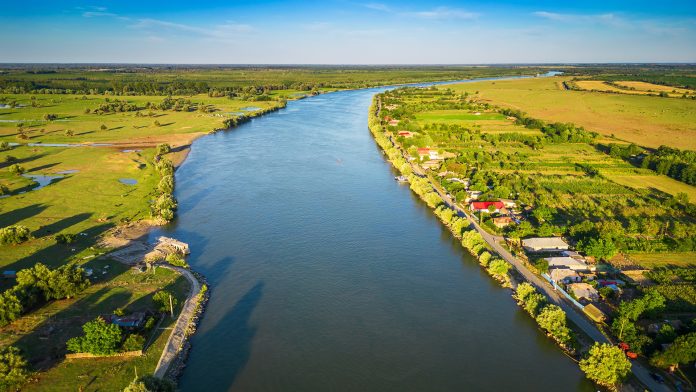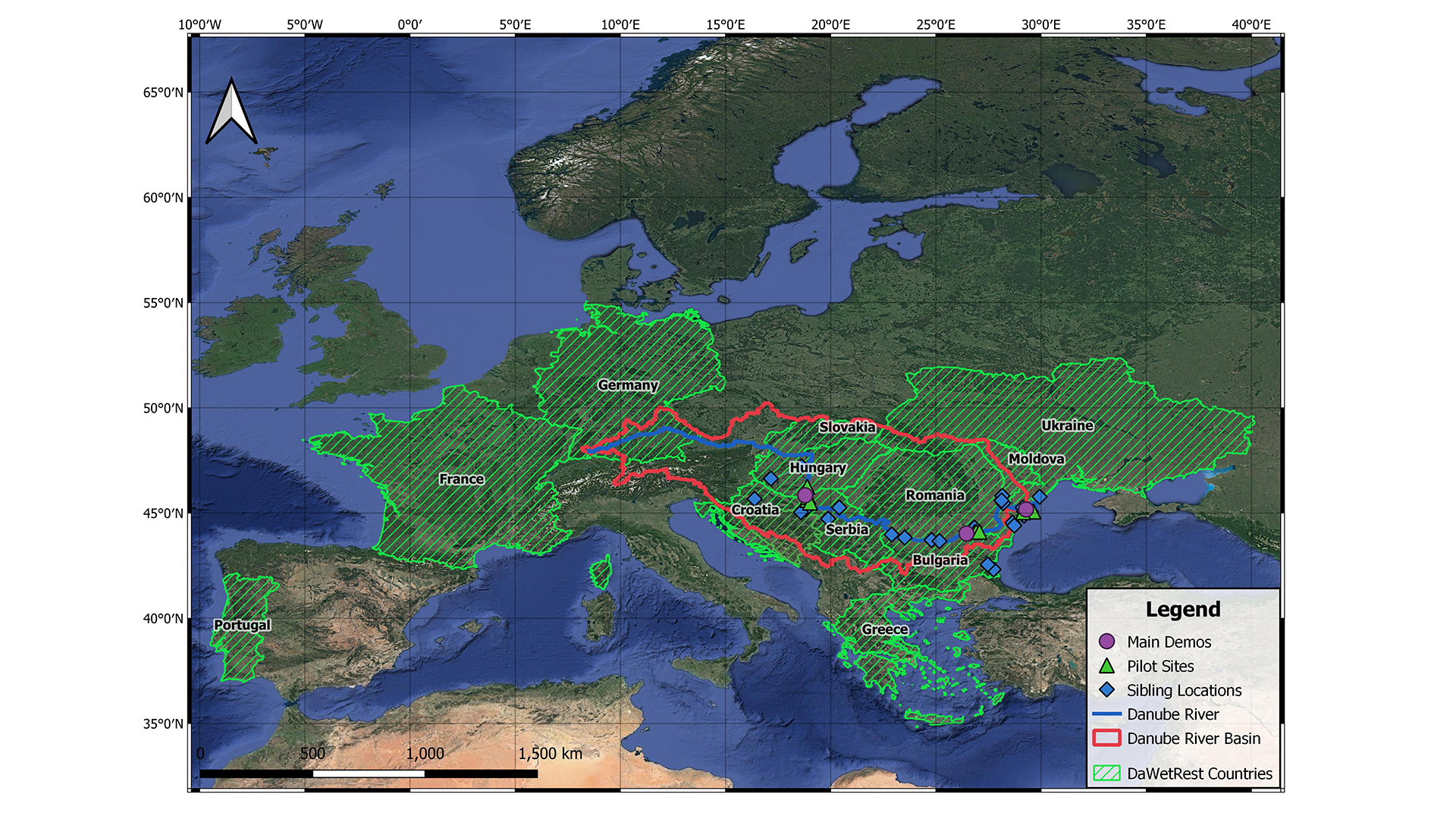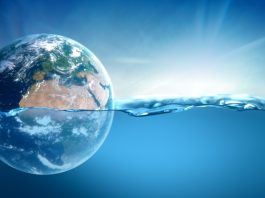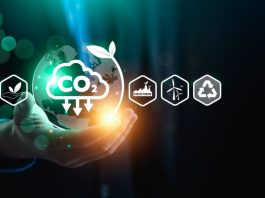The DaWetRest project aims to restore biodiversity to the Danube River and the neighbouring wetlands through reconnection activities and community engagement.
Within the Lighthouse ‘Danube and the Black Sea’, the Danube Wetlands and flood plains Restoration through systemic, community-engaged, and sustainable innovative actions (DaWetRest) project activities aim to improve the linkage between the Danube and its tributaries with the neighbouring wetlands.
This supports the Water Framework Directive in all its objectives:
• Ensuring the conditions for the normal biological cycles of natural wetlands-river inhabitants such as invertebrates, fish, aquatic flora and fauna,
• Improving hydro-morphological quality,
• Improving physical and chemical parameters, and
• Decreasing water pollutants.
In addition, the planned creation of green hatchery complexes as nature-based solutions (NBS) contributes to biodiversity improvement. It is in line with the Biodiversity Strategy aimed at increasing waterfowl populations in wetlands. A further innovation is the development of modern methodologies for freshwater monitoring to improve and control the freshwater ecosystems in line with the EU Mission ‘Restore our Ocean and Waters by 2030’ objectives.
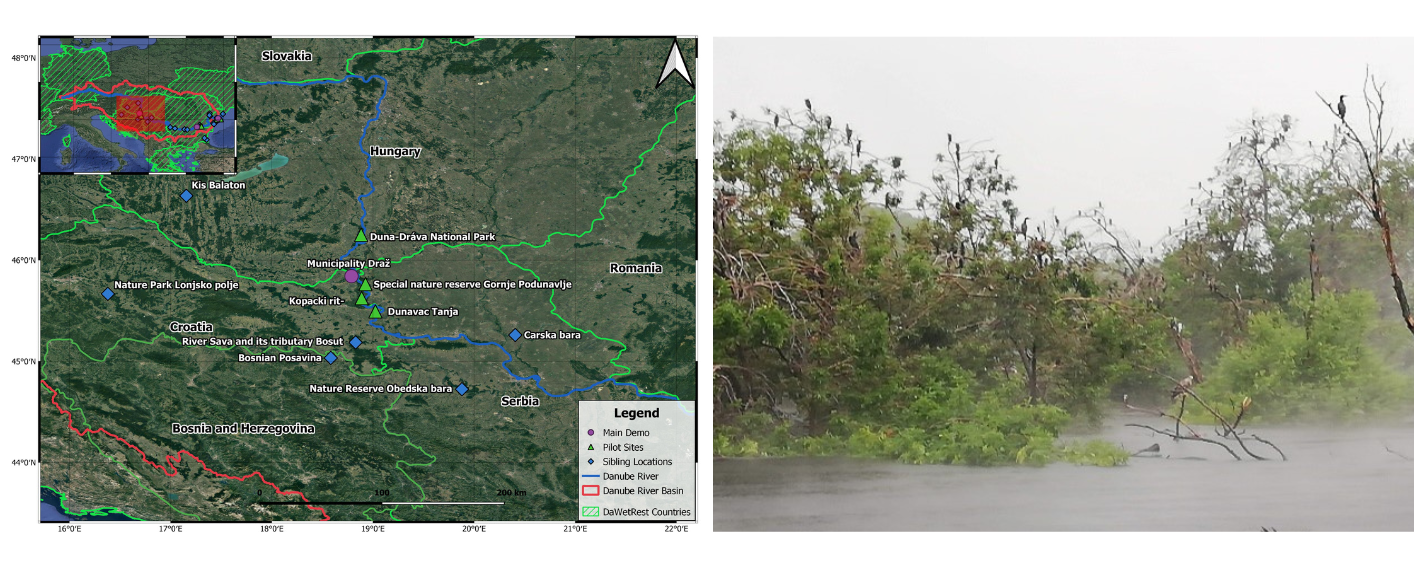
The Danube ecosystem
The Danube River Basin (DRB) covers an area of 801.463 km² in 19 countries and is a treasury of freshwater biodiversity that is important to be saved for future generations. Currently, there are numerous protected areas in the DRB. Among them are the wetlands, floodplains, coastal wetlands, salt marshes, and those protected by the Ramsar Convention, mostly to protect the biodiversity of waterfowl since the Danube basin is a major bird nesting area and bird migration corridor.
Many economic activities, such as agriculture, forestry, economy, tourism, nature protection, etc. depend on the numerous ecosystem services wetlands provide. If well-maintained, wetlands are cycling carbon, water, and nutrients, producing food and fibre, purifying water, regulating water flows, providing habitats, ensuring a high rate of biodiversity through the food chain, retaining accumulated water during floods, reducing eutrophication, and mitigating climate change.
DaWetRest project operates three DEMO regions – Middle Danube (MD) covering Danube-Deava wetlands at the border of Croatia, Serbia and Hungary; Lower Danube (LD) covering part of the Danube between Bulgaria and Romania and Danube Delta (DD) in Romania, Ukraine and Moldova.
In these regions, ten sites for innovative actions are chosen to pilot restoration and preservation activities utilising science- and nature-based solutions on the Danube with the active engagement of local citizens and other stakeholders. 14 sibling locations on the tributaries of the Danube and in other parts of the partner countries provide further input to achieve the maximal impact of restoration, improvement, biodiversity increase and community strengthening.
Furthermore, six associated regions covering all four lighthouse areas of the Mission are selected where successful replication of DaWetRest solutions is to be implemented.
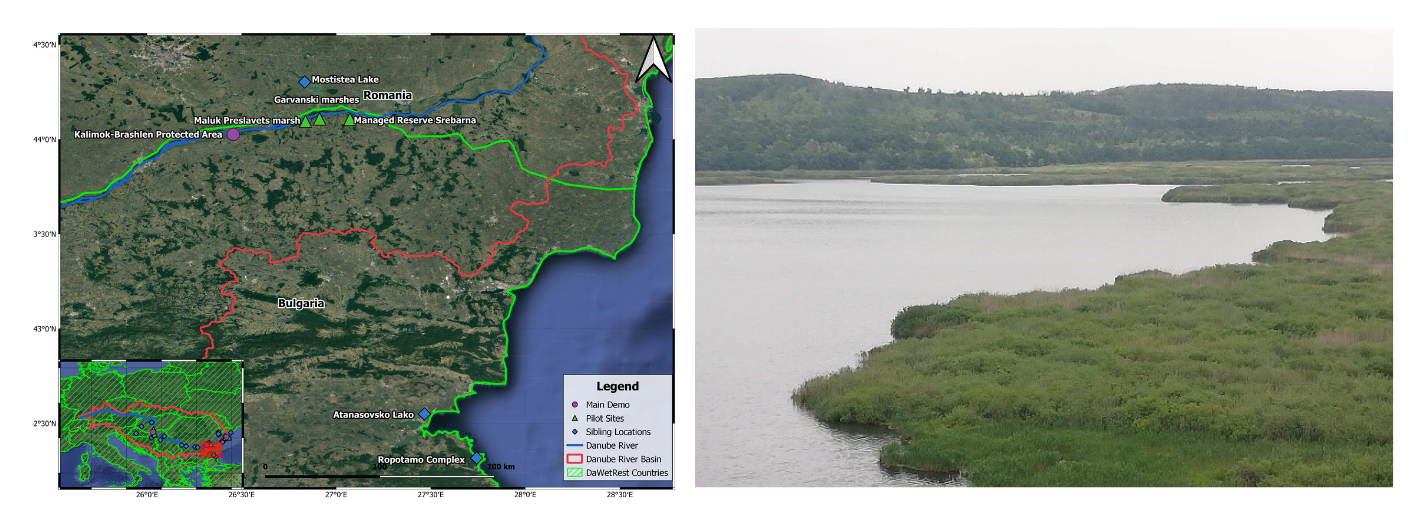
The importance of restoration
During years of no specific attention to nature preservation, anthropogenic activities caused the loss of more than 70% of wetlands, flood plains, and coastal wetlands, such as salt marshes in the DRB. Many sites have been disconnected from the river’s streams. The potential of the mentioned ecosystem types has been reduced or even lost.
Gaining enlargement of cities or broadening of agricultural lands, the society lost many possibilities for other economic, ecological, geographical, hydrological, social, health, and aesthetic activities. Losing the river’s meandering, flood plains, and wetlands leads to a change in the overall landscape, deteriorating ecological potential, and increasing the risk of flooding and infrastructure damage.
Human activities have introduced and caused the spread of invasive species, which causes permanent disturbance of ecosystems and significant and fast successions that cannot be compensated by natural processes.
Thus, the restoration and protection of areas containing the mentioned ecosystem types are urgently needed to mitigate disbalances in nature and harmful effects of natural phenomena such as floods, droughts, decreasing biodiversity, and GHG emissions. Wetlands have a high capacity to sequester and store carbon. Clearing or drainage of wetlands can lead to large losses of stored organic carbon to atmospheric carbon dioxide.
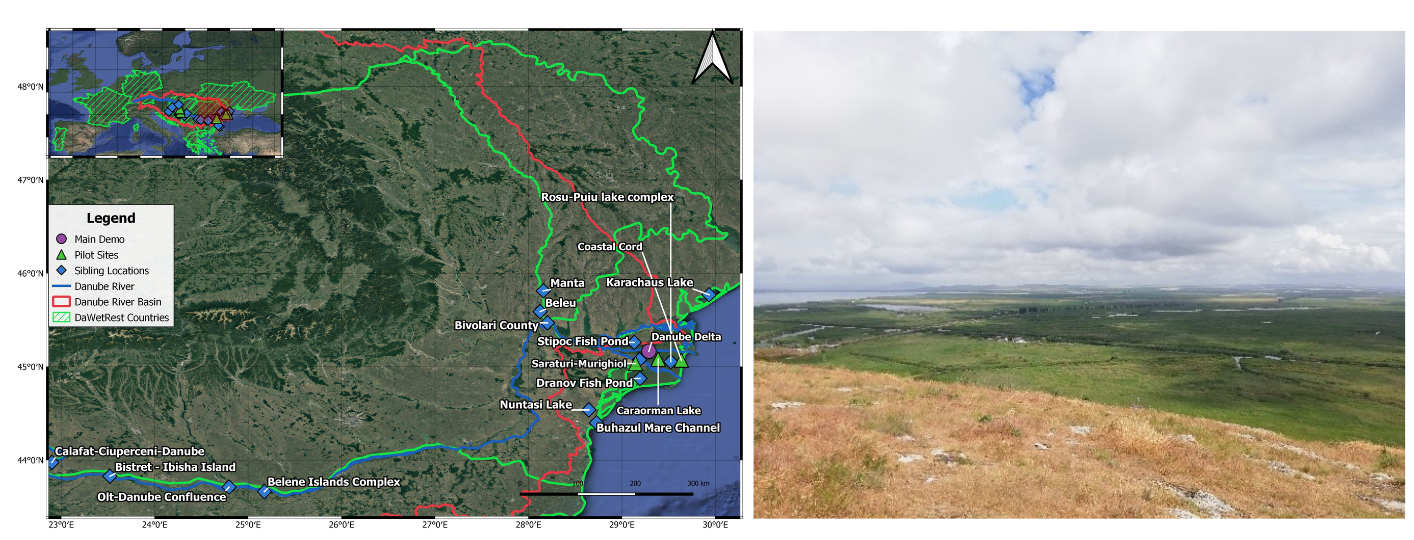
DaWetRest applies a holistic approach regarding ecosystem connections, understanding that the adjacent wetland areas close to the Danube River need to be restored simultaneously with the Danube River and its tributaries because they all present ecological synergies.
Partners in DaWetRest work to define the baseline carbon storage for the investigated sites, sequestration and emission rates, and measurement/modelling of carbon flows in different types of wetlands.
The DaWetRest MD DEMO activities aim to ensure the conditions for the normal biological cycles of natural wetlands-river inhabitants such as invertebrates, fish, aquatic flora, and fauna; improve hydromorphological quality, physical and chemical parameters; and decrease water pollution.
The LD DEMO activities target introducing an innovative methodology for freshwater monitoring, which will contribute to improving and controlling freshwater ecosystems in line with the Mission objective.
The most important contribution of the DD DEMO is focused on implementing NBS to increase carbon sequestration capacity using reed management, restore lateral connectivity to save salt marsh habitats by reducing hydrodynamic effects and improve water and soil quality.
Engaging stakeholders and community
DaWetRest project partners include academia, public institutions, SMEs, citizens as well as different types of local authorities and regional sectoral administration, which are important stakeholders from the Danube River Basin. The project activities comprise in addition meetings with other stakeholders in the DEMOs regions at all stages of the implementation.
All are invited to connect with the Mission Charter and further engage with actions for a successful implementation of the Mission and its lighthouses. All are constantly being acquainted with business opportunities with a focus on carbon-neutral, ecologically acceptable, circular-blue, and nature-based solutions at the local level.
By actively involving the local communities, the project communicates numerous ideas of the EU documents to them, identifies their needs, and promotes restoration and protection of wetlands, climate neutrality, and the blue economy.
As the DEMO regions are quite different, DaWetRest works on site-specific solutions by combining active and passive measures of restoration that can be modified and successfully replicated in sibling, pilot, and associate region sites.
Positioning of the project
The project started from the unbalanced state between human activities and nature, and the main goal is to re-balance this relation, focusing on nature-based solutions while finding a way to extend, replicate and scale up the innovative measures in other European regions (sibling locations and associate regions). One important target of this project is to pave the way for the second stage of the Mission beyond 2026 by scaling up developed, tested and implemented innovation actions.
DaWetRest is an ecologically acceptable, not harmful, innovative, green, digital, socially involving, economically supporting and citizen-engaging project which provides core interventions that can be replicated in pilot and sibling sites.
Intelligent monitoring and management systems are designed to support restoration and increase climate resilience of wetlands, flood plains, coastal wetlands, and salt marshes, as well as prepare to use the wetland’s potential in the local economy. Hydraulic models are developed to study different restoration scenarios for the implementation of hydrological works to restore lakes, floodplains, salt marshes and coastal areas.
New business models, such as Recirculating Aquaculture System fisheries, give new opportunities for local communities and improve water quality and biodiversity. A Digital Portal ensures timely reporting and citizen involvement.
Partners from Bulgaria, Croatia, France, Germany, Greece, Hungary, Moldova, Portugal, Romania, Serbia, Slovakia, and Ukraine work together in DaWetRest, which is coordinated by the Climate, Atmospheric, and Water Research Institute at the Bulgarian Academy of Sciences.
Please note, this article will also appear in the 19th edition of our quarterly publication.

